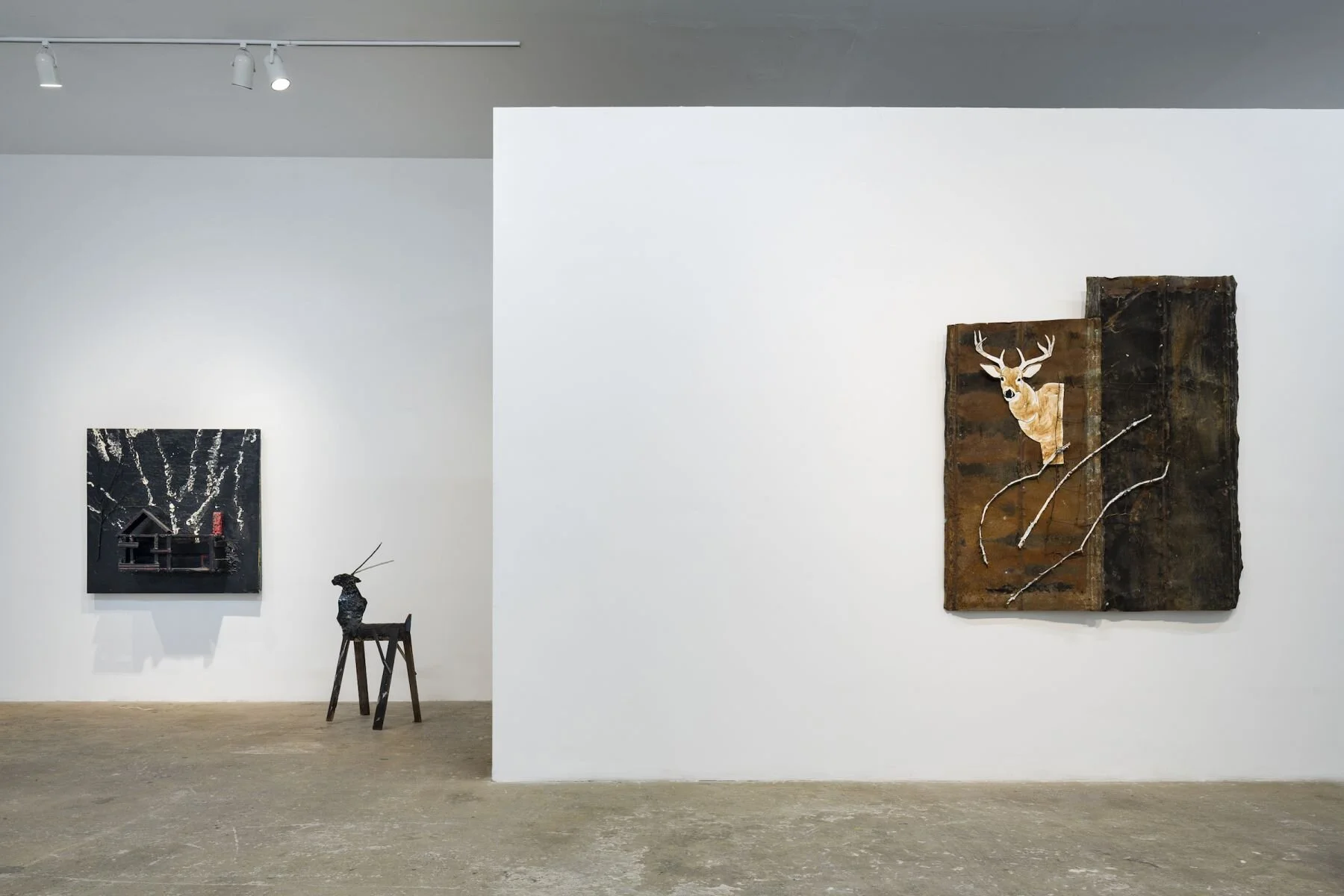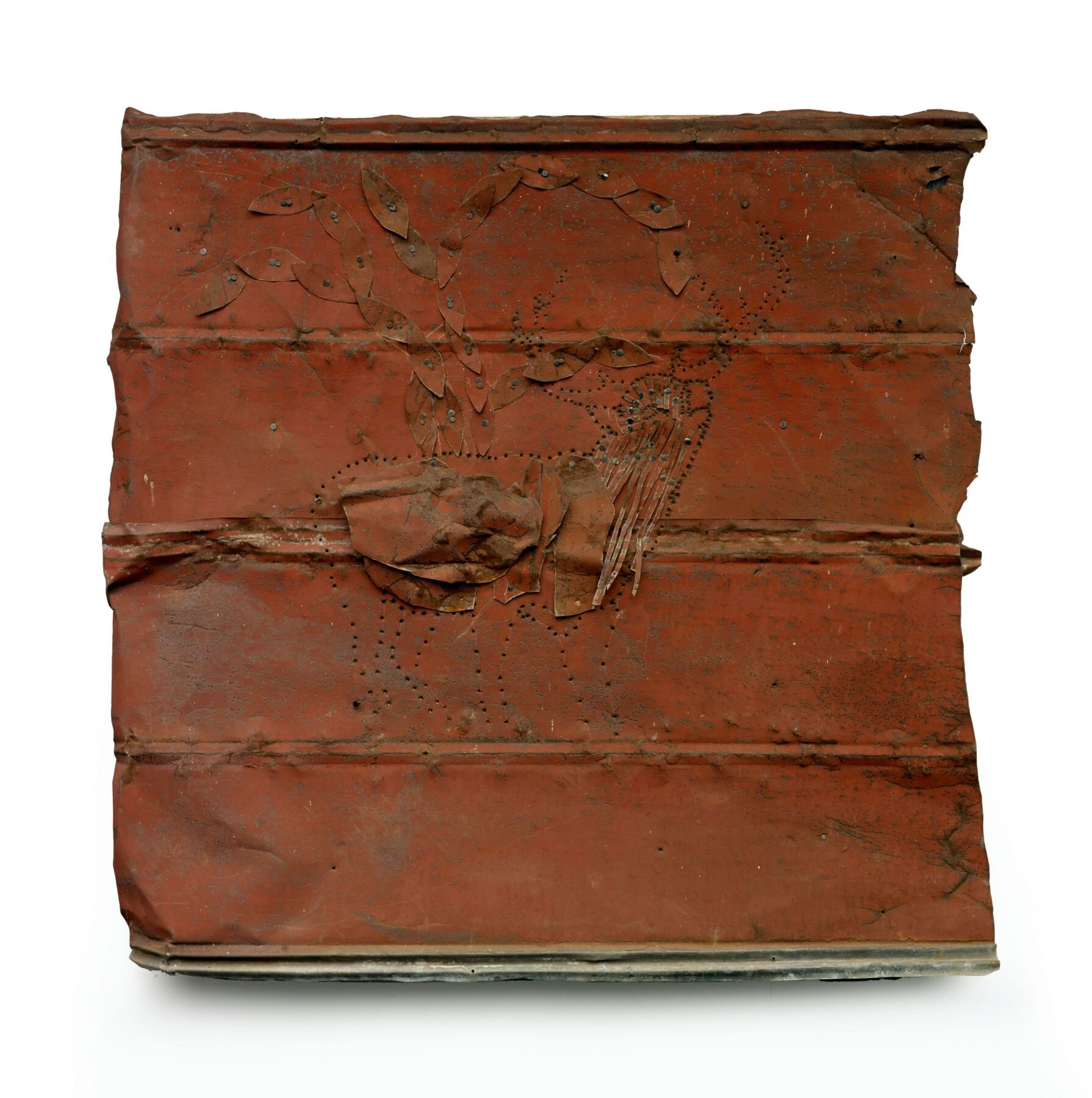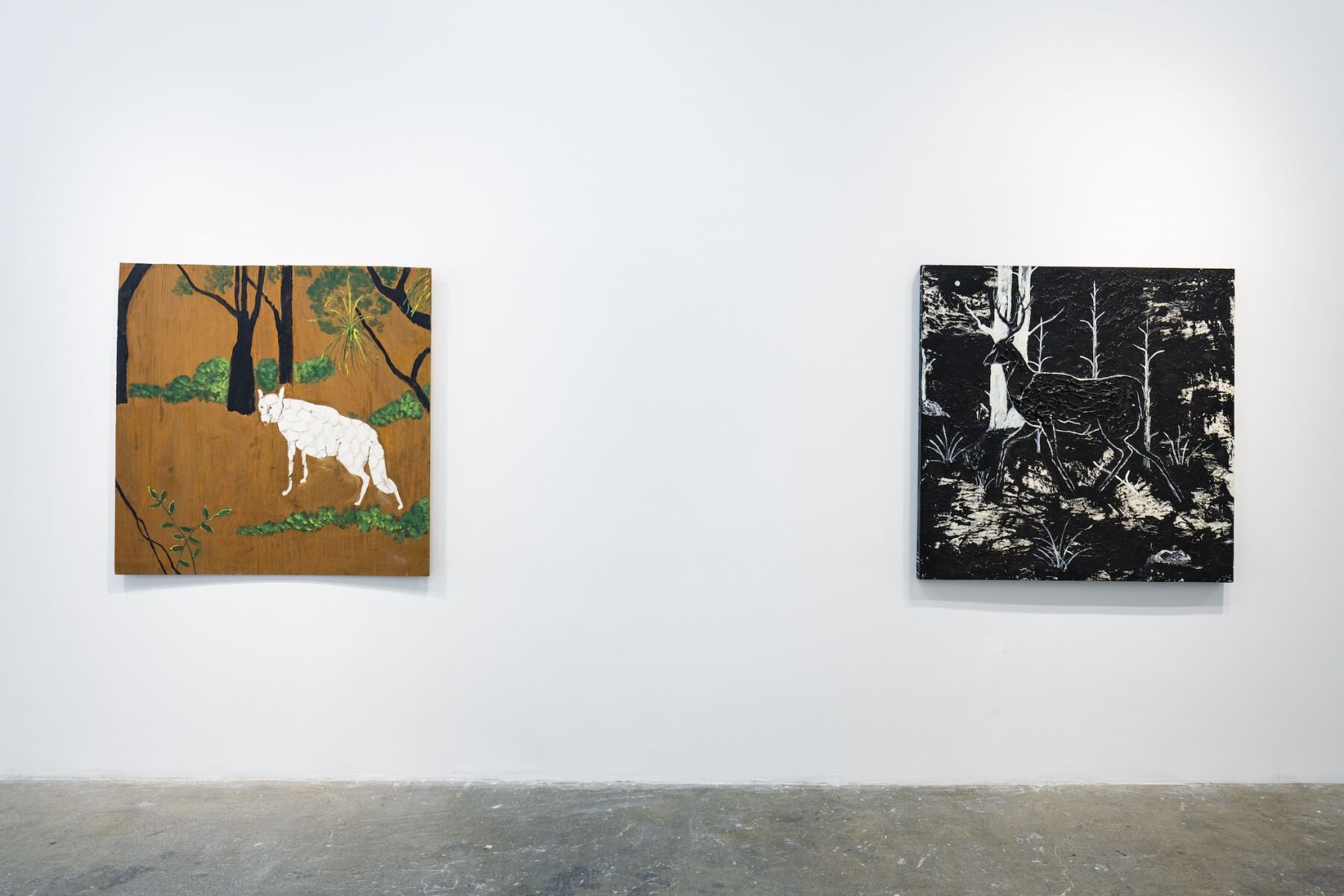Ronald Lockett
June 23 – July 22, 2016
Ronald Lockett
June 23 – July 22, 2016
Sargent’s Daughters is pleased to present the first New York solo exhibition of Ronald Lockett (1965-1998), a self-taught artist from Bessemer, Alabama. The exhibition will open on Thursday, June 23rd, from 1-6pm, and will remain on view through July 15th, 2016. The exhibition will be concurrent with the first retrospective on the artist at the American Folk Art Museum in New York.
Ronald Lockett grew up in Bessemer, Alabama, next to the home of his older cousin, the artist Thornton Dial, with whom he was very close. Some mystery surrounds Lockett, who died of complications from HIV/AIDS at the age of thirty-two. By contemporary accounts from his father and relatives, Lockett was a shy and isolated man who learned to paint from television and expressed his intensity of emotion through his work.
Lockett employed sophisticated collage techniques to his paintings, using found objects such as wire, cloth, nails, and fencing to add texture to his surfaces. The squared patterns often resemble a metal quilt, a favorite pastime of his neighbor and great-grandmother Sarah Lockett, to whom he was deeply attached. For his tin collages he scavenged rusty tin siding covered with oxidized paint from nearby buildings owned by the Dial family. He cut and nailed strips of tin to the surface in abstract and figurative shapes, oftentimes using fencing, branches and metal that protrudes several feet from the main panel of the work.
Lockett’s works directly address the darker moments in human history: the Oklahoma City bombings, the Holocaust, Ku Klux Klan, environmental collapse, and discrimination. He was drawn to the natural world and deer appear frequently in Lockett’s work as an avatar for himself, usually ensnared by barbed wire, branches or metal fencing. The struggle to free oneself from traps, both physical and psychological, continually created tension for Lockett, who found himself imprisoned both in a dying body and a decaying post-industrialist town. Despite this, or perhaps because of it, another avatar he often used is the “rebirth” symbol: a skeletal animal floating in a dark background, the inverse of his trapped stag. The rebirth symbol encompasses both nature and mortality, and reminds us of Lockett’s primary urge to create—to live past death and remain, even if in spectral form, a part of the world he left behind and the artistic lineage he embraced and enhanced.
Ronald Lockett (b. 1965 – d. 1998) was born in Bessemer, Alabama, where he continued to live and work his whole life. His work was recently acquired by The Metropolitan Museum of Art, New York City and is in the permanent collection of the High Museum of Art, Atlanta, GA. A traveling exhibition entitled “Ronald Lockett: Fever Within” will open in June 2016 at the American Folk Art Museum, New York City and then travel to the High Museum of Art, Atlanta, GA and the Ackland Art Museum, Chapel Hill, NC. The exhibition is accompanied by a 160-page book edited by Bernard L. Herman and published by The University of North Carolina Press. It includes 60 full-color plates of Lockett’s paintings and assemblages, as well as written contributions by Paul Arnett, Bernard L. Herman, Sharon Patricia Holland, Katherine L. Jentleson, Thomas J. Lax, and Colin Rhodes.
This exhibition is produced in collaboration with the Souls Grown Deep Foundation, Atlanta, GA.














